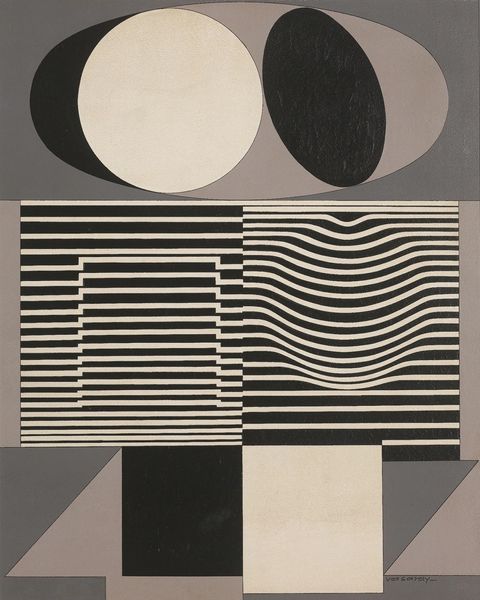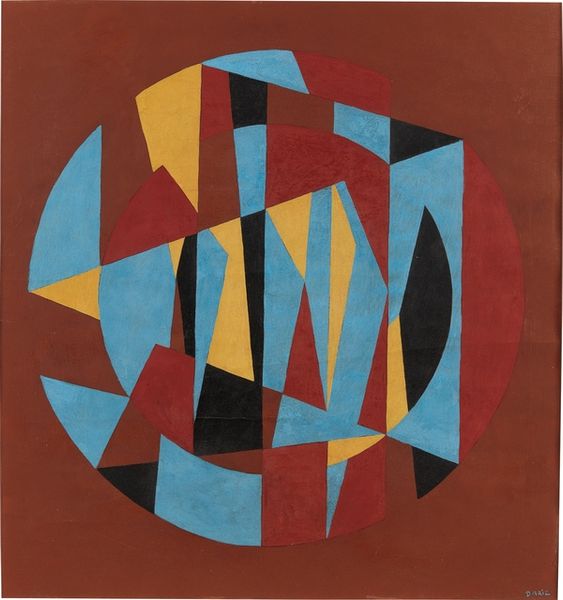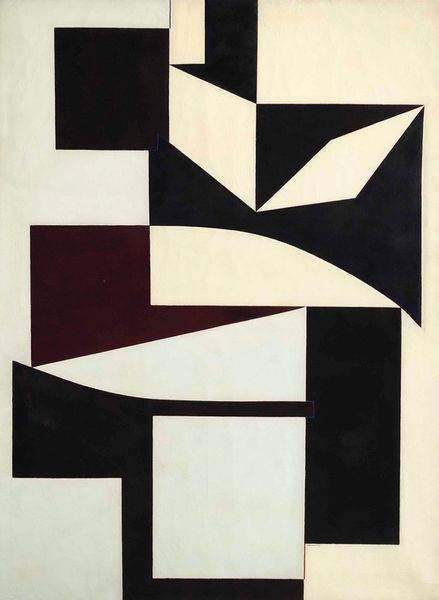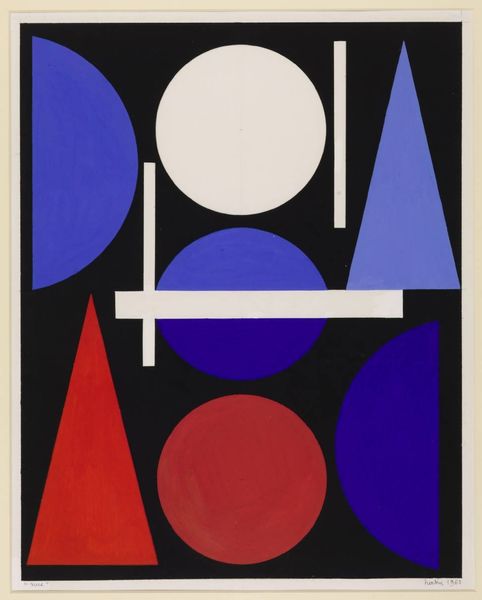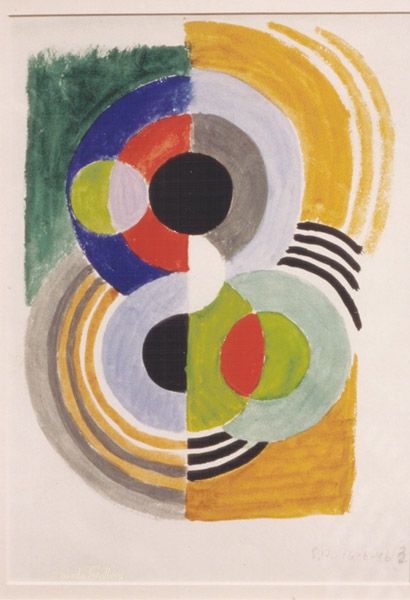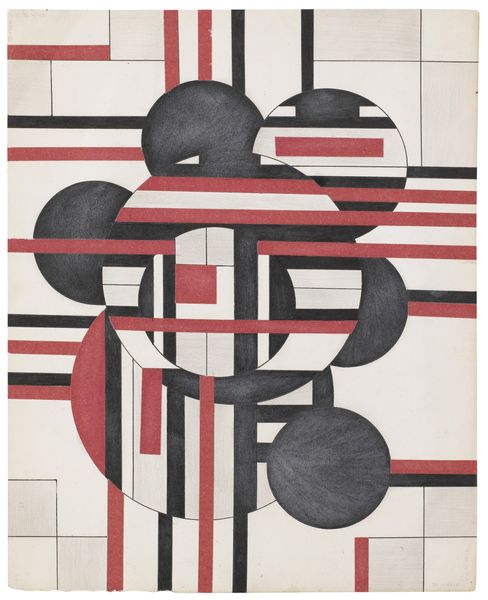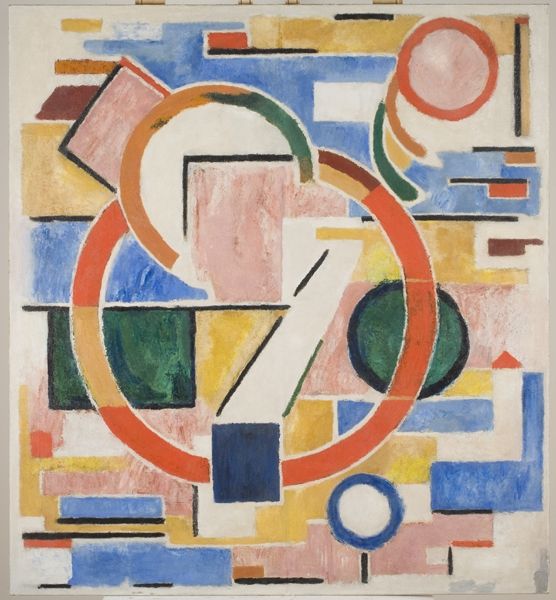
painting
#
painting
#
form
#
geometric-abstraction
#
abstraction
#
line
#
bauhaus
#
modernism
Copyright: Public domain
Editor: Here we have "Z II," a painting by László Moholy-Nagy. Its use of geometric shapes is so striking! It gives me the impression of overlaid translucent graphics. How do you interpret this work, focusing on its visual elements? Curator: The geometric vocabulary and the transparency effects are precisely where the strength of this work lies. Moholy-Nagy's arrangement prioritizes formal relationships: the interplay of circles, lines, and a subtle color palette generates a dynamic spatial experience. The superposition invites us to visually dissect and reconstruct the composition. Note the texture in the upper right of the canvas. What would you call that? Editor: It appears almost like a cross. What's interesting is the grid; its muted colors become bolder when overlayed on top of the shapes. Is it a painting or a study? Curator: That’s a compelling question, since Moholy-Nagy was affiliated with Bauhaus, which merged arts and crafts. However, the surface of the painting suggests it may be more conceptual. This highlights Bauhaus' effort to find unity in art. It emphasizes not a narrative, but visual experience. Consider the intersection of shapes; how they create both visual harmony and slight discordance. The piece thus resists easy resolution, instead becoming an invitation to sustained viewing and contemplation. Editor: So, the meaning is created not by historical context, but through a thoughtful composition. Curator: Exactly! By analyzing the painting’s formal elements, we grasp Moholy-Nagy's artistic intent, appreciating the power of abstraction to elicit a nuanced experience. Editor: I can now see that "Z II" encourages us to focus on pure aesthetics, celebrating the power of design elements. Thank you.
Comments
No comments
Be the first to comment and join the conversation on the ultimate creative platform.
